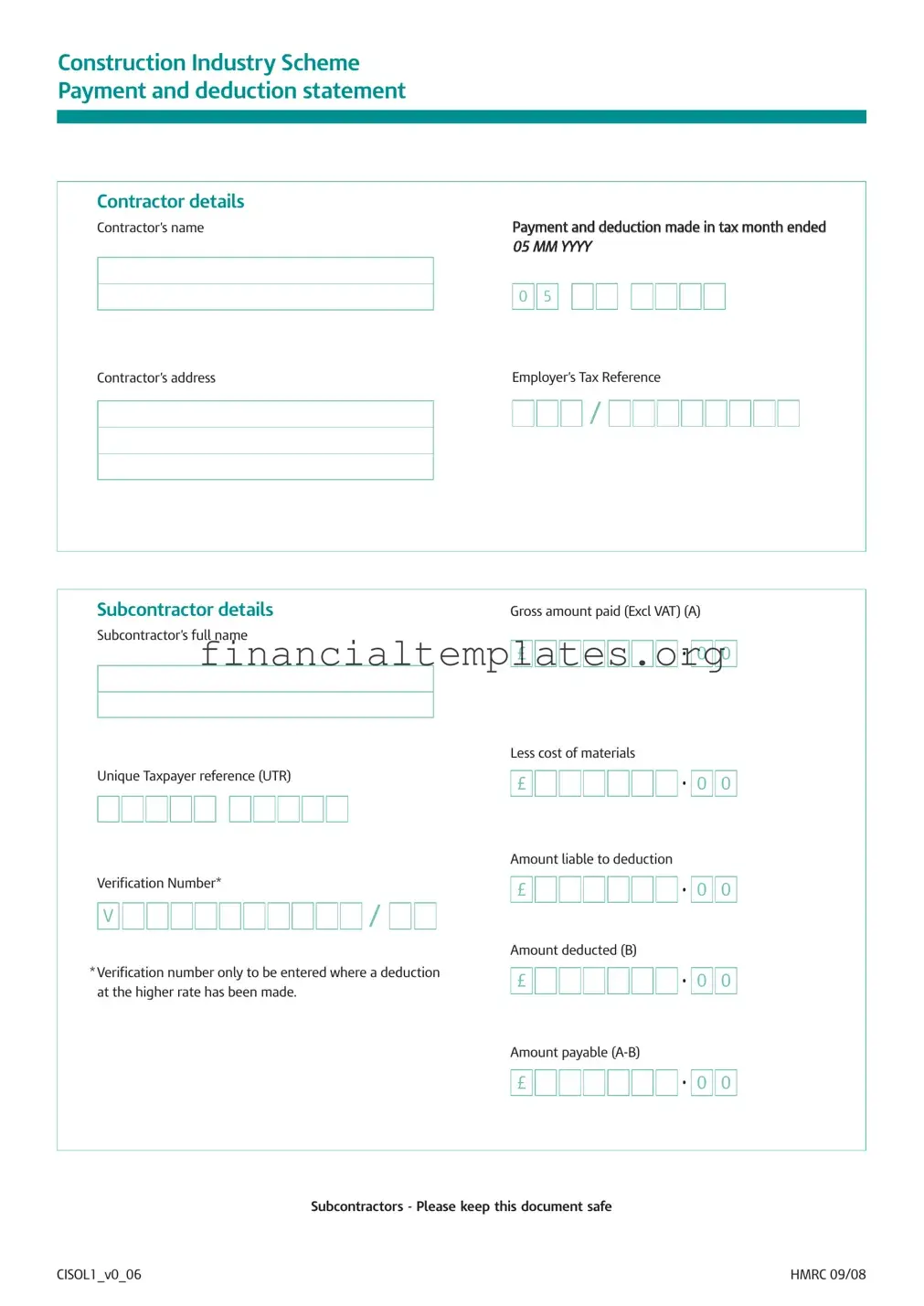The Payment Deduction Statement form, used in the Construction Industry Scheme (CIS), shares similarities with many financial and tax documents across various sectors. One such document is the W-2 form used in the United States to report wages paid to employees and the taxes withheld from them. Both forms serve as official records for tax purposes; the W-2 captures employee income tax withholding, while the Payment Deduction Statement details tax deductions from payments to subcontractors.
Another comparable document is the 1099-MISC form, commonly used to report payments made to freelance workers and independent contractors in the U.S. Both the 1099-MISC and the Payment Deduction Statement offer a summary of non-employee compensation, crucial for the payee's tax filings. The key difference lies in their jurisdictional use and the specifics of the information reported, as the 1099-MISC encompasses a wider range of payment types.
The Invoice serves as a multifaceted tool in business transactions, detailing goods or services provided, their costs, and VAT if applicable. Similar to the Payment Deduction Statement, an invoice outlines the financial transaction between parties, but it lacks specific tax deduction details. The invoice plays a preliminary role, preceding the need for a Payment Deduction Statement, which exclusively deals with tax deductions.
Pay Stubs, given to employees by employers, detail wages earned, taxes, and other deductions over a pay period. They share common ground with the Payment Deduction Statement in itemizing deductions; however, pay stubs differ in scope, focusing on employment relationships rather than subcontractor arrangements within the construction industry.
The Schedule C (Form 1040) used in the U.S. for reporting profit or loss from a business is somewhat akin to the Payment Deduction Statement. Self-employed individuals use Schedule C to detail expenses and income, which may include subcontractor payments. While Schedule C encompasses a broader business income report, the CIS form specifically deals with the tax aspect of subcontractor payments.
The Profit and Loss Statement (P&L), another key financial document, compares revenues, costs, and expenses during a specific period. While serving a broader purpose of presenting a business's financial health, it indirectly relates to the Payment Deduction Statement by potentially including subcontractor costs as expenses, thereby affecting the net income figure reported.
Bank Statements, offering a record of transactions within an account, might include details of payments made to subcontractors. While they provide proof of payment similar to the Payment Deduction Statement, bank statements do not specify tax deductions or serve a direct tax reporting purpose.
The VAT Return, a crucial document for businesses to report the amount of VAT due to or from the tax authorities, shares the tax documentation aspect with the Payment Deduction Statement. Both detail tax-related transactions, yet the VAT Return focuses on the value-added tax specifically, unlike the CIS document's focus on income tax deductions for subcontractors.
The Cash Flow Statement, a financial statement showing the cash and cash equivalents entering and leaving a company, might reflect payments to subcontractors and associated tax deductions indirectly through its reporting of operating activities’ cash flows. Although it provides a broader view of a company's financial activity, the Payment Deduction Statement offers a detailed account of specific tax deductions.
Lastly, the Employment Eligibility Verification Form I-9, which verifies an employee's authorization to work in the U.S., is connected through its role in the employment process, ensuring legal work status. While fundamentally different, both forms underscore the importance of verifying work-related details – the I-9 confirms employment eligibility, whereas the Payment Deduction Statement confirms tax compliance for subcontractor payments in the construction industry.

